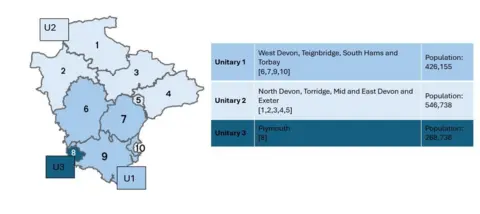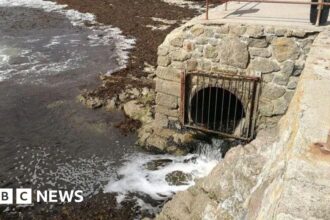Miles DavisDevon political reporter
 North Devon Council
North Devon CouncilDevon should be split into three unitary authorities in a huge shake-up of local government, according to the district councils in the county.
All of the district councils and the county council will be abolished in the biggest national reorganisation of local government for 50 years.
The existing district councils say they want to see a new unitary authority across north and east Devon and Exeter, a second unitary authority covering the south and west of the county and Plymouth staying as it is.
The plans are at odds with proposals put forward by Plymouth and Exeter, which both want to expand, and by Devon County Council with Torbay yet to announce its plans.

The district councils are backing what is known as the 4-5-1 proposal.
It involves one unitary authority for West Devon, Teignbridge, South Hams and Torbay.
A second unitary authority for North Devon, Torridge, Mid Devon, East Devon and Exeter.
Plymouth remaining as a standalone unitary authority.
In a joint statement on behalf of all district council leaders, they said: “Our proposal aims to create a more effective and financially sustainable local government for Devon by aligning council boundaries with real communities and local economies.”







